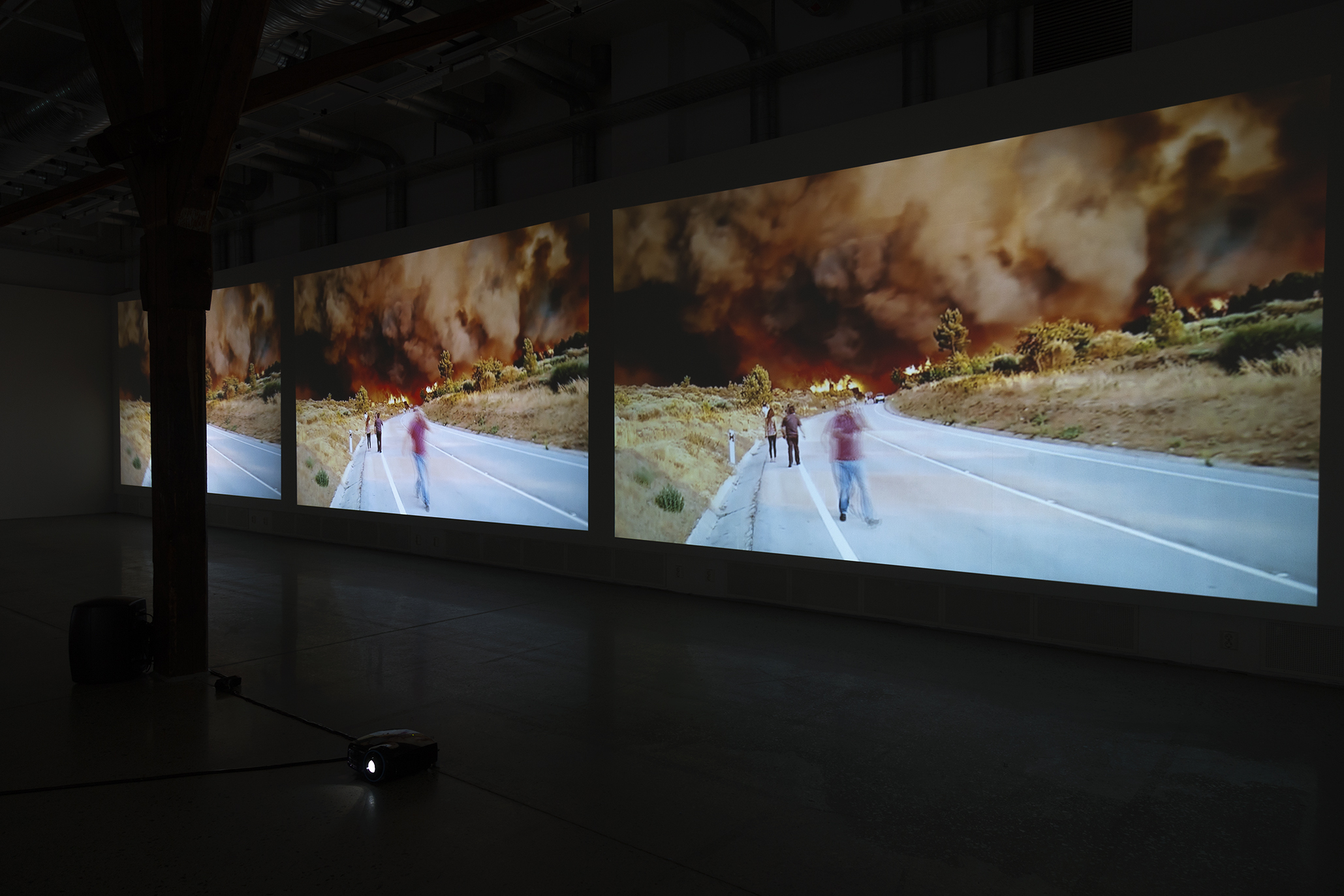Full HD 16:9, Colour, Sound
2017 - 18
08 min
With Yen Proesmans
Shot in Pedrógão Grande, Santo Amaro,
Faculdade de Belas-Artes da Universidade de Lisboa,
The work includes found footage.
During the summer 2017 parts of Portugal where besieged by some of the worst forest fires seen in recent times in Europe. The fire spread over 45.000 hectare and took 66 human lives. Resulting in huge areas becoming empty and uninhabitable. Forest fires have historically been a threat in the area, but the phenomena seems to be only increasing.
The eucalyptus tree, introduced to the Portuguese flora at the end of the 18th century, today covers around 7 precent of the country’s area, and is a tree known for its highly flammable qualities. In some cases, it can explode when exposed to extreme heat, fragments can travel up to a 100 meters, resulting in a fire spreading rapidly and aggressively.
In October 2017 the artist Thyra Dragseth set out with a camera, into the forest north of Lisbon, with her friend and colleague Yen Proesmans. This excursion, intertwined with other footage resulted in the work In Search of Dead(ly) Fires. A four channel video installation where the ambiguous photographic gaze has become the focal point of the work itself.
In the attempt to depict the landscape and the fateful events that have taken place, the photographer looses her innocence. The artists gaze is both compassionate and opportunistic. Whilst showing the spectator the harsh reality, the erotic and aesthetic in the experience is ultimately emphasised. The same landscapes that portray this horrific disaster, are manipulated to create something beautiful.
The work investigates violence in its different manifestations. The artist visually explores our almost perverse fascination to violence, circling the bruised body like a vulture.
Though traumas, present in the nature, and present to the people wandering these landscapes are captured, it reaches a point were it is impossible to separate the cameras sober footage from the fascination of the catastrophe belonging to the eye looking through the lens.
Text by Sofie Amalie Andersen.


